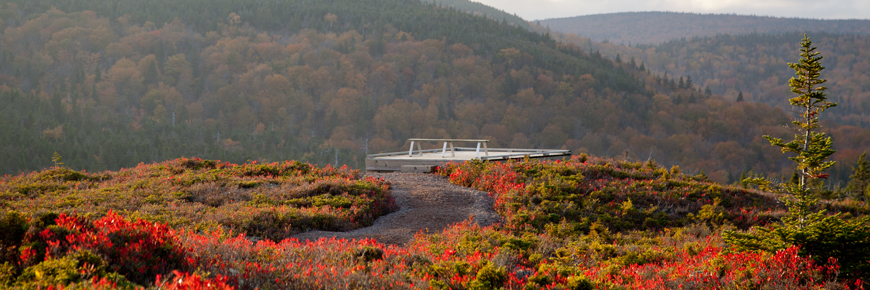
Levels of biodiversity
Cape Breton Highlands National Park
Landscape diversity
The different types of habitats, including the nonliving things such as rocks, and the living things such as plants. Just as a forest has more species than a farmer's field, landscapes with lots of different habitats have more species than landscapes with fewer habitats.
Species diversity
The different types and numbers of animal and plant species in a particular landscape. Because species interact, landscapes with more species are healthier and more resilient in the face of environmental change than landscapes with few species.
Genetic diversity
The different traits that individuals possess. A variety of gene combinations is important to allow a species to adapt to changes in their environment. For example, some individual pine trees have a gene that allows them to be resistant to the pine beetle. This means that at least some trees may survive a beetle infestation. As populations become smaller and more isolated, they lose the genetic diversity that allows them to adapt to change.
- Date modified :